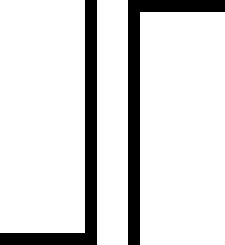In search of the Hypokeimenon
This work is set to the backdrop of an ever increasingly connected world. There is at best a quasi-mystical awareness of this flourishing, intangibly interconnected network. Perhaps it is most easily perceived in the growing variety of domestic goods clamouring to be connected to the internet of things; be it receiving a text from your self-aware bin telling you that it needs emptying or watching cooking programs on your multimedia fridge door, there is undoubtedly a movement in societal consumerism towards the hyper-networked.
Such movements can be seen as symptomatic of a wider more serious series of connections and causalities. The continually increasing demand for and depletion of virgin resources, a clamour for the latest and newest of everything. Disregard a perfectly usable object for the newer edition with little more to offer than an ‘s’ after its name. Whimsical, fleeting objects born from a material circulation system that is far from cyclical. Haemorrhaging material and energy at every step. Such conspicuous consumption and a growing inability to recognise value in objects is seemingly a symptom of, as Bill Brown puts it, “a pathological condition most familiarly known as modernity” (Brown 2001: 10).
It is perhaps this societal subject-object dialectic that has banished the connotations of circulation, transference, translation and energetics from our contemporary considerations of material things. Indeed, Bruno Latour charges modernity with artificially setting an ontological distance between objects and humanity. It is an ever-growing challenge to perceive a future where such consumption can continue to proliferate unimpeded by the reality of material and environmental vitality. With objects becoming the totemic centre of consumerist/capitalist society it seems important to investigate their nature. As objects’ symbolic importance grows, the general understanding of their inherent material value withdraws and the ontological miscommunication grows. Contemporary materialism is growing increasingly detached from the material.
Coming to this work as a pragmatist and practitioner of design over that of scholar I intend to ask with an obdurate voice two key questions.
How do the ontological tendrils of material things impact on the role and ultimately the responsibilities of the designer?
How should a practitioner engage with such metaphysical constructs?
The body of this work of speculation is, as of its subject matter, manifest in individual writings and documentation that float freely and can be experienced in any order. However, through aggregation, it is hoped that an underlying recondite connection will grow.
“An investigation into the increased complexity and alienation involved in practicing as an architect. […] This is outstandingly intelligent, original and useful. It broaches very difficult concepts, but presents them in an engaged and comprehensible way. The reading is impressive and the organization and orchestration of your response is excellent and deserves a wider audience”



